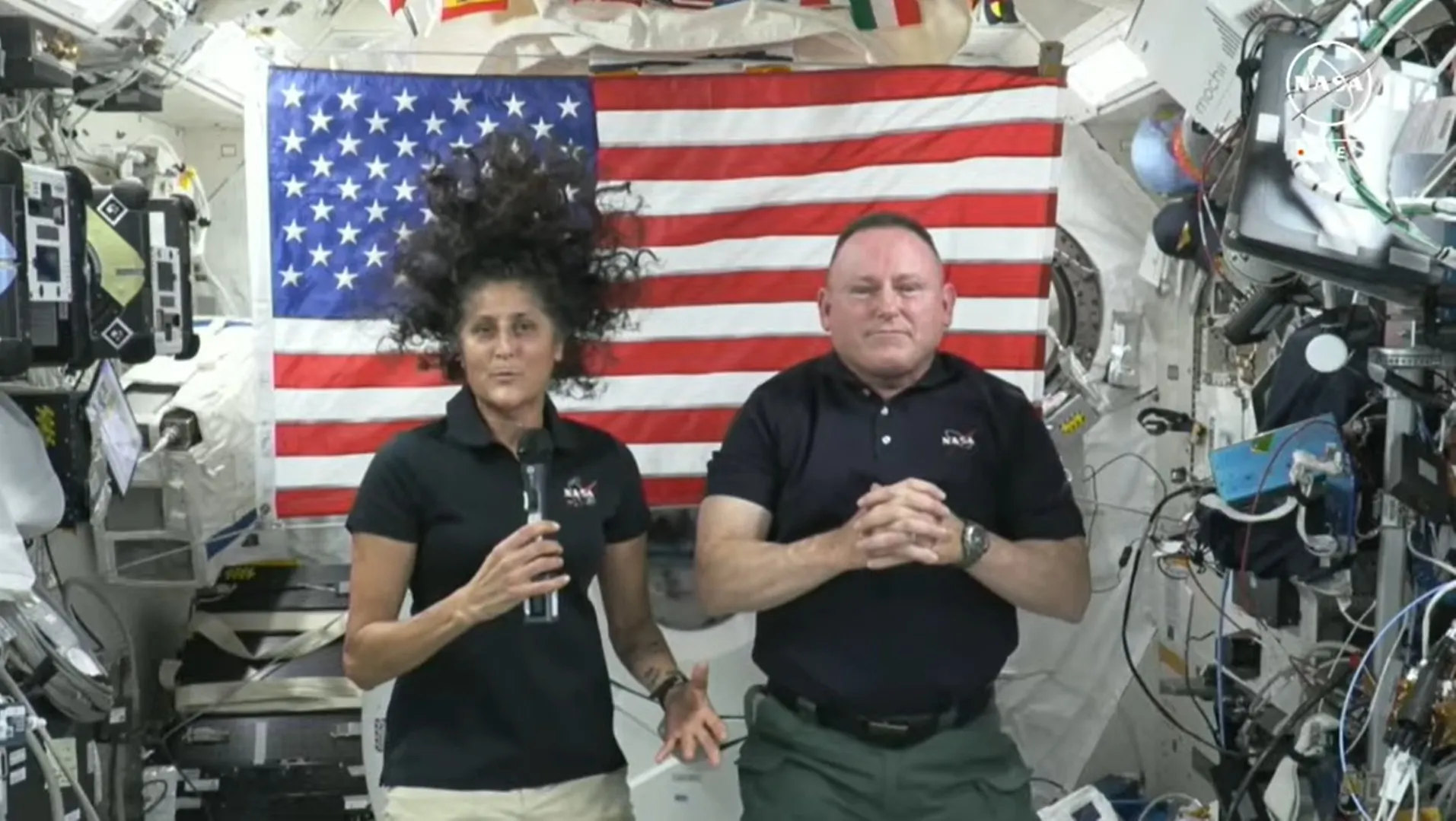United States
NASA, SpaceX reveal new date to return stranded Starliner crew back to Earth

NASA Astronauts Stuck on ISS to Return Home Earlier Than Expected After Seven-Month Mission
Two NASA astronauts, Butch Wilmore and Suni Williams, who have been living and working aboard the International Space Station (ISS) for over seven months, are finally set to return to Earth in March 2025—sooner than initially anticipated. Their extended stay on the ISS began after their original spacecraft, Boeing’s Starliner, experienced technical issues shortly after arriving at the space station in June 2024. The spacecraft, which was supposed to carry them safely back to Earth, encountered helium leaks and propulsion system problems, rendering it unfit for the return journey. Despite the challenges, Wilmore and Williams have remained resilient and even expressed gratitude for the extra time in space, emphasizing their commitment to the mission and their trust in NASA’s recovery efforts.
The rescue plan involves SpaceX’s Dragon spacecraft, which is scheduled to launch on March 12, 2025, and will travel to the ISS to retrieve the stranded astronauts. Once Dragon arrives, it will undergo a handover process with the current crew before bringing Wilmore and Williams back to Earth. This accelerated timeline is a result of NASA’s collaborative efforts with SpaceX, showcasing the flexibility and partnership between the two organizations. Steve Stich, manager of NASA’s Commercial Crew Program, praised SpaceX’s agility and proactive approach in making another spacecraft available for the mission. “Human spaceflight is full of unexpected challenges,” Stich said, highlighting the importance of teamwork and adaptability in overcoming such hurdles.
NASA initially expected the return mission to take place in late March 2025, but the agency was able to expedite the process by utilizing SpaceX’s Dragon Crew-10 spacecraft. Crew-10, which includes NASA astronauts Anne McClain and Nichole Ayers, JAXA mission specialist Takuya Onishi, and Roscosmos cosmonaut Kirill Peskov, will arrive at the ISS on March 12. Upon their arrival, they will conduct a brief handover with the outgoing Crew-9 team, which includes NASA astronaut Nick Hague and Roscosmos cosmonaut Aleksandr Gorbunov. Once the transition is complete, the Crew-9 Dragon spacecraft will depart the ISS with Wilmore, Williams, Hague, and Gorbunov on board, marking the end of their extended mission. The Crew-10 spacecraft, meanwhile, will remain docked at the ISS to support the next phase of research and operations.
Wilmore and Williams have been remarkably positive about their prolonged stay on the ISS, even as they approached the seventh month of their mission. In September 2024, during a press conference from the space station, they assured reporters that they were not “fretting” over their situation. Instead, they expressed gratitude for the additional time in space, which has allowed them to contribute to critical scientific research and gain invaluable experience. “We found some things that we just could not get comfortable with putting us back in the Starliner when we had other options,” Wilmore explained, emphasizing their confidence in NASA’s decision to use the Dragon spacecraft for their return. Both astronauts have demonstrated remarkable resilience and professionalism, setting an inspiring example of adaptability in the face of unexpected challenges.
The Dragon spacecraft assigned to the Crew-10 mission is not new to the ISS. It will mark its fourth trip to the space station, having previously supported NASA’s Crew-3, Crew-5, and Crew-7 missions. The reuse of this spacecraft underscores SpaceX’s commitment to developing cost-effective and reliable solutions for human spaceflight. NASA has also praised Boeing for its cooperation in addressing the issues with the Starliner, which successfully returned to Earth uncrewed in September 2024. While the Starliner’s malfunction delayed the original return plan, it also highlighted the importance of redundancy and collaboration in ensuring the safety of astronauts and the success of space missions.
As the March 12 launch date approaches, NASA and SpaceX are working closely to ensure the smooth execution of the rescue mission. The handover process between Crew-9 and Crew-10 will be critical, as it ensures continuity in the scientific work and operational tasks aboard the ISS. Once the Crew-9 Dragon spacecraft departs with Wilmore, Williams, Hague, and Gorbunov, it will splash down safely in the ocean, bringing an end to their extended mission. The success of this mission not only highlights the capabilities of NASA and its private-sector partners but also serves as a reminder of the complexity and risks involved in human space exploration. Despite the challenges, the determination and teamwork displayed by everyone involved are a testament to humanity’s continued push into the cosmos.